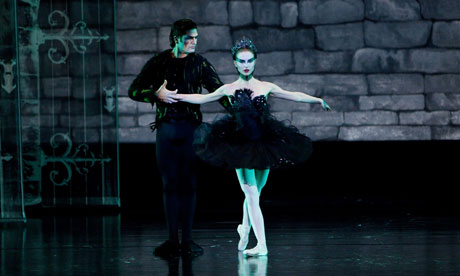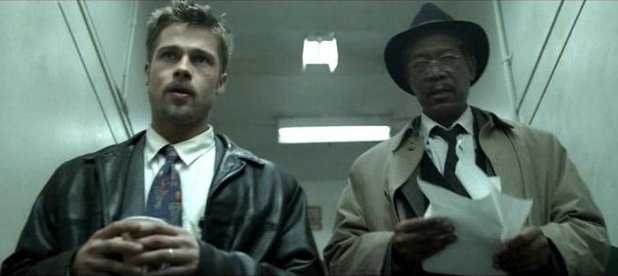What is Cinematography?
Cinematography is looking at the way the shot is framed, the angle it is taken in and the movement of the camera. The various angles allow the audience to see a different representation of the characters and the scenario.
These are some camera shot sizes:
Extreme long shot (XLS)
An extreme long shot is used in order to show the full person and the slight surrounding. In the "Black Swan" the XLS is used to show the protagonists bodies whilst they dance, however, also show the stage behind them.
Long shot (LS)
A long shot is used in order to show the person from head to toe and this is used in "Twilight". The main protagonists full bodies are displayed so the audience can see the main characters clearly. Even though there is a slight surrounding being shown the characters fill out the shot as they are the main priority.
Medium shot (MS)
A medium shot is used in order to show the person from waist up. In "Batman" the joker is shown from waist up. This enables the audience to see the body language of the character and the facial expression.
Medium close up (MCU)
A medium close up is used to show the character a little bit higher than waist up. Usually, these shots are taken from the belly-button up. In "Se7en" the characters are shown from belly button up to highlight their facial expressions and also the actions of their hands. This shot is to emphasise the character on the right holding the piece of paper as it may be important.
 Close up (CU)
Close up (CU)
A close up is used to show the protagonists face. This is to emphasise the facial expression as it is important to know what the character is feeling. In 'Psycho' the character is screaming which helps the audience feel her emotions. This keeps the audience engaged.
Extreme close up (XCU)
 Establishing shot (ES)
Establishing shot (ES)
An establishing shot is used to show the scene. It is usually used at the start of end of a film. In "Batman" this establishing shot is used to focus on the background and surroundings.
Camera angles:
 High angle
High angle
High angles are used the look down on someone. Because the angle is placed above the head this makes the character look small. In "James Bond" the high angle is used to make him look smaller as he is the one being attacked here.
 Low angle
Low angle
Low angles are used to look up at someone. Because the angle is placed below the character it makes them look bigger. This is used to also make the protagonist look superior or admirable. In "Spiderman" the character is being shown from a low angle which is emphasising the superiority.
Camera movement:
Panning shot
A panning shot is when the camera moves across following the character or object. In "Fast&Furious" from 0:15 to 0:20 the panning shot is present.
Crane shot
A crane shot is when the camera is on a crane. There is flexible camera movement during this shot. In "Fast&Furious" from 0:00 till 0:06 the crane shot is present.
Tilt shot
A tilt shot is when the camera moves up and down on the character or object. In "Se7en" from 0:12 till 0:16 the tilt shot is used.
Zoom
Zooming captures emotion and also gets away from it.
P.O.V
A P.O.V shot is when it looks like it is from the characters view.
In "Spiderman" from 0:00 till 0:03 and 0:08 till 0:10 is both a P.O.V shot and a hand held shot as the camera is moving with his head.
In "Spiderman" from 0:00 till 0:03 and 0:08 till 0:10 is both a P.O.V shot and a hand held shot as the camera is moving with his head.
Hand held
A hand held shot is when the camera is moving with the person.Over the shoulder
An over the shoulder shot is involving two people. Only one person can be clearly seen and the other is only seen from their back/shoulder.
Two shot
A two shot is when both the characters have equal space in the scene.
Manual focus
Manual focus is when the camera is going in/out of focus.
Depth of field
Depth of field is when parts are focused and other parts are not. This is to emphasise one character more than the other.
Conclusion:
From researching cinematography it has allowed me to understand the different camera shots, angles and movements. I will be using most of these in my thriller to emphasise my focus.




Katie, a good post here and the examples you choose to support your points are well chosen and in some cases, analysed well.
ReplyDeleteTo improve;
-can you discuss the impact of the zoom, handheld and POV in your definition?
-in your 'Spiderman' analysis, can you provide more detail using PEER?
-in your conclusion, state which examples of cinematography you are hoping to use